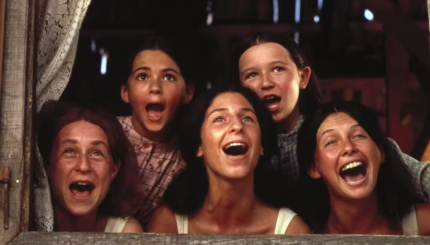Commentary on Parashat Vayikra, Leviticus 1:1-5:26; Deuteronomy 25:17-19
Again, as at Sinai, God beckons to Moses. In Parshat Vayikra, the first Torah portion in the book of Leviticus, God lays out a detailed program for human-Divine interaction: the sacrificial cult. The portion goes on to describe sin sacrifices and guilt sacrifices and sacrifices for inadvertent violations, creating a mechanism for the Israelite community to develop a relationship with God that would outlive its spokesman, Moses.
Sacrifice and Prayer
From this moment in Jewish history, through to the destruction of the Second Temple (with a break for the Babylonian exile), the sacrificial system served as the primary vehicle for communication between the Israelites and God. Since the destruction of the Temple 2,000 years ago, the Jewish community has struggled to find other ways to communicate with the Eternal. Rabbis, sages and philosophers have sought pathways that allow usto speak with God.
Prayer is one such alternate pathway, allowing communities and individuals to call out to God with supplication and gratitude. It maintains the human-God axis of interaction that is present in the sacrificial system, but uses words instead of burnt offerings as the medium of communication. But the Torah hints at another, more metaphorical opportunity for interacting with the Divine.
I-Thou Relating
In Genesis, the Torah teaches us that human beings are created in God’s image. Reading this very literally, we can infer that every interaction we have with another person, every face-to-face encounter is, in effect, an encounter with Divinity.
The 20th-century philosopher Martin Buber explores this concept in his book I and Thou. He suggests that there are two types of human encounters: I-It encounters and I-Thou encounters. In both of these, I see myself as a full human being; I am a subject. The difference is in how I view the other person. In an I-It encounter, I view the other person as an object, as someone whose value is assessed based on what he or she can do for me. Instead of having intrinsic value, the other person has instrumental value.
By contrast, in an I-Thou encounter I see the wholeness of the other in dialogue with me. The I-Thou encounter is the opposite of the I-It encounter. Here, I meet the other as a fellow subject. He or she has intrinsic value. The exchange is not transactional and it cannot be quantified.
In El Salvador
As a recent participant on an AJWS Rabbinic Student Delegation to Ciudad Romero, El Salvador, I found myself reflecting on Buber’s teaching and thinking about how hard it is to see the Divine in other people. We were hosted by a not-for-profit organization called La Coordinadora that works with local farmers to teach sustainable and organic farming. The people with whom we worked were poor peasants, the kind of people whom I had never before encountered. It was hard for me not to try to fit them into some kind of category, to objectify them in some way in order to make the experience of their poverty more palatable.
But over the course of the delegation, I sensed myself moving along Buber’s continuum. Whereas before the trip, I would have described “these people” as “the poor of the Third World,” I came to see them as Irma and Marta and Maria Helena. Through hoisting the pick axe or the hoe and doing a good day’s work in the fields, my fellow rabbinical students and I began to see the humanity in the face of the other in El Salvador. I tried hard to seek out an I-Thou encounter with each person I met, and that effort felt imbued with the Divine.
Participating in service work alongside the people of Ciudad Romero reminded me not to generalize about the poor, not to cast them as objects in the story I tell about my life and my liberal politics. As I returned to my everyday life, I resolved to try to bring that insight with me.
Parashat Vayikra challenged the Jewish community to embrace sacrifice as a new system of communication rooted in holiness. Prayer provides another vehicle for our interaction with God. But we should recognize that it is our interactions with others that offer a unique means of communion with the Divine that is profoundly imbued with the ethical principles and traditions of our people.
Provided by American Jewish World Service, pursuing global justice through grassroots change.
Torah
Pronunced: TORE-uh, Origin: Hebrew, the Five Books of Moses.



